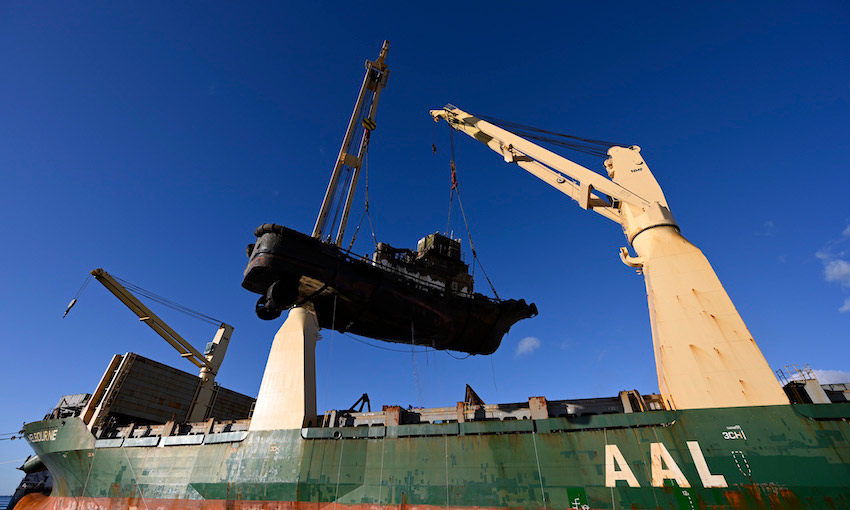TASPORTS and heavy lift ship AAL Melbourne are reattempting the lift of sunken tugboat Campbell Cove after the process proved more challenging than the removal of York Cove on the weekend.
The two TasPorts tugs had been sitting at the bottom of Tasmania’s Mersey River since late January. They sunk when cement carrier Goliath allided with them in Port of Devonport.
York Cove was removed over the weekend, but Campbell Cove was sitting in an unbalanced position, making the most recent lift operation more complex than the first.
TasPorts chief operating officer Stephen Casey said it was “unsafe and near impossible” to lift the wreck into the specially constructed cradle on AAL Melbourne.
“Now that our salvors can see it they can adjust the chains and rigging to commence a new lift tomorrow,” Mr Casey said.
The wreck was returned to the water to prepare for a second lift attempt which is understood to have taken place this morning (11 August).
“It is expected that the Campbell Cove will dewater or drain while it is out of the water into the containment area which can be skimmed overnight of any diesel or oil that drains from the wreck,” Mr Casey said.
“The Campbell Cove wreck will ultimately be welded to its cradle on the deck for transport to Brisbane where both wrecked tugs will be scrapped.”
The initial allision reportedly resulted in an estimated 60,000 litres of fuel being spilled into the river.
TasPorts, throughout the salvage process, said it has been working to protect the environment and maintain the integrity of the oil spill response boom around the wreck site.
Ben Cropley, CEO of the Oil Response Company of Australia, said his company’s work on the salvage operation has been complex for a number of reasons.
He said a salvage operation is complex in the best of circumstances.
“Oil recovery is a not a set and forget exercise – you need to be monitoring and adjusting the whole time,” Mr Cropley said.
“In the Mersey River we do not only have the challenge of what the tide is doing but we also have natural eddies in the area.
“I have worked on a lot of incidents where you can actually see the oil on top of the water and you know what it is doing.
“In this case, what was unknown was just how much diesel or oil was still in the wrecked tugs.”





